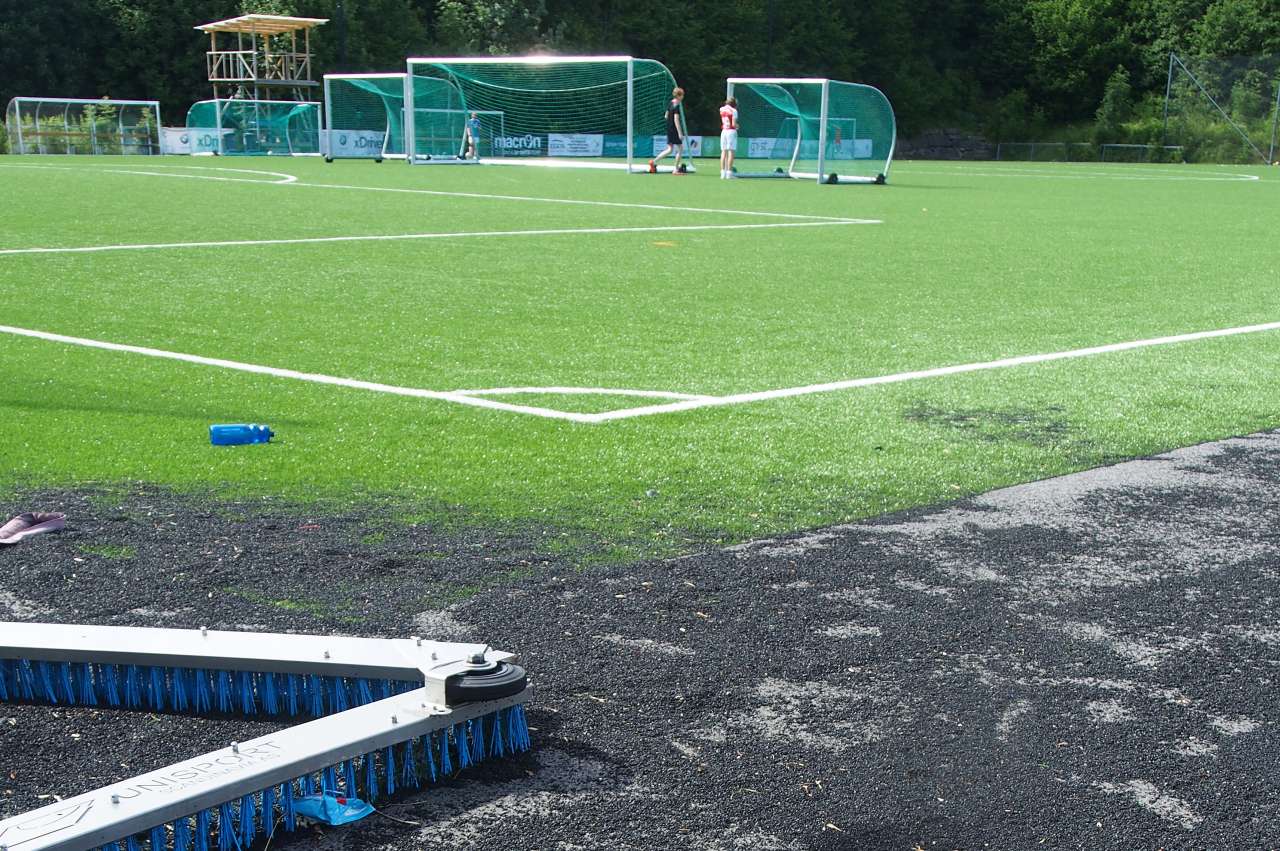Soccer field granulate goes astray

Photo: Erik Joner, NIBIO.
The rubber granulate used in artificial turf can easily spread to surrounding areas, which presents a significant risk to the environment. Now researchers are advising on how to reduce the spread.
There are approximately 1,750 artificial turf soccer fields in Norway. Every year, several tons of synthetic rubber granules are spread from these fields into the surrounding environment. The granulate helps to cushion the base layer of the field and provides better control of the ball. It is great for the players but bad for the environment.
NIBIO researchers have mapped the amounts of rubber granulate in the soil around three artificial turf fields in eastern Norway, finding significant levels of accumulation.
“In Hosle we found just under 8 kg of rubber granulate in one square meter at a depth of 0–4 cm and almost 4 kg at 4–8 cm. This was found in the woods 15 metres from the fence around the field,” says Claire Coutris, researcher at NIBIO and one of the report’s authors.
Around the field at Føyka, the researchers found 17 kg at a depth of 0–6 cm.
Coutris says that analysts working on the Vannområdet Indre Oslofjord Vest project have calculated how much granulate goes astray from 26 fields in eastern Norway.
Between 15 and 50 percent of stray rubber granulate ends up in wastewater and wastewater treatment, or goes into general waste. A staggering 40 percent accumulates in the environment. This is equivalent to over 100 metric tons per year—and that’s just from the 26 artificial turf fields in Vannområdet Indre Oslofjord Vest.
There are a number of measures that can be implemented to reduce the spread of rubber granulate. A simple step would be for players to clean their shoes and clothes before leaving the field. It is also important to establish solutions for collecting the granules around the fields, so that they don’t end up in drains. During the winter, the use of snowblowers should be avoided. New methods of cleaning and recycling the rubber granulate are also being tested.
In recent years awareness of the rubber granulate problem has been growing. The Football Association of Norway is now actively working to limit the spread of granulate from fields, and the Norwegian Environment Agency will introduce new regulations on it in 2019. Alternatives to rubber granulate, which is currently produced by grinding up car tires, are also being developed.
Contacts

Contacts

